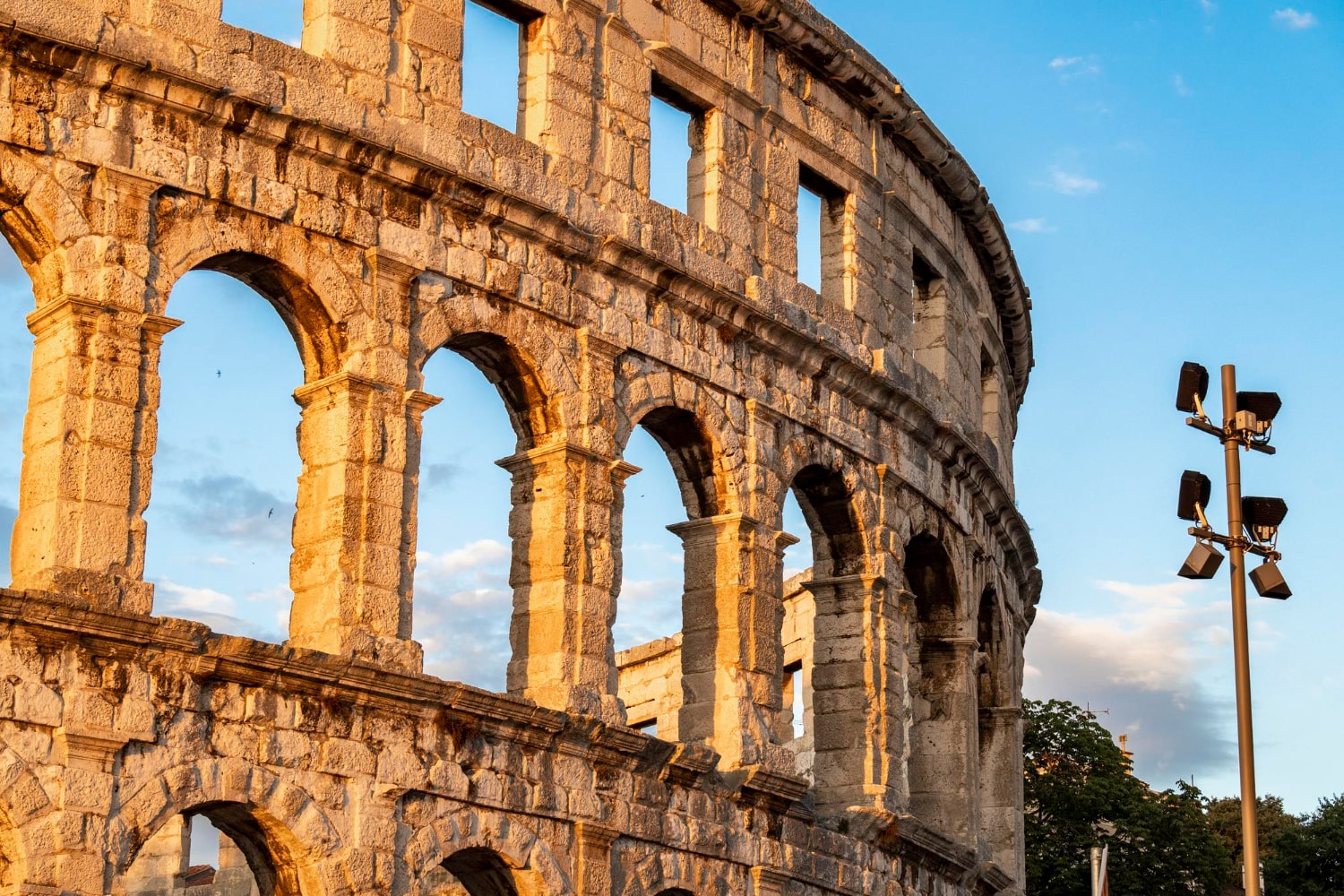
33 interesting facts about Colosseum
- 👁️ 292
The Colosseum, or the Coliseum, also known as the Flavian Amphitheatre, is an iconic symbol of Imperial Rome. It is located in the centre of the city of Rome, Italy, and is known for its grandeur and as the site of ancient gladiatorial combat. Construction began under the emperor Vespasian in AD 70-72 and was completed in AD 80 by his son Titus. Over the centuries, the Colosseum has been battered by earthquakes and stone-robbers but stands as a symbol of ancient Roman engineering and gladiatorial combat. Here are 33 fascinating facts about this ancient structure:
- The Colosseum is an elliptical amphitheatre in the centre of Rome, capable of holding up to 80,000 spectators.
- It was mainly used for gladiatorial combat and public spectacles such as animal hunts, mock sea battles, and executions.
- Construction began in AD 70-72 under Emperor Vespasian and was completed in AD 80 by his son Titus.
- The Colosseum was further modified during the reign of Domitian, Vespasian’s younger son.
- It remained in use for nearly 500 years with the last recorded games being held there in the 6th century.
- The building was constructed with travertine, tuff, and brick-faced concrete.
- The Colosseum’s original Latin name was Amphitheatrum Flavium, often anglicized as Flavian Amphitheatre.
- The name “Colosseum” is believed to have been derived from a colossal statue of Nero that once stood nearby.
- It was estimated that about 400,000 people lost their lives in the Colosseum games.
- Over a million wild animals were killed in the Colosseum games throughout its use.
- The Colosseum was also used for theatrical performances, battle re-enactments, and religious processions.
- A retractable awning known as the “Velarium” covered the Colosseum to protect spectators from the elements.
- The Colosseum included 80 entrances, allowing for efficient flow of large crowds.
- It featured a complex system of underground passages and rooms known as the “hypogeum.”
- Emperors used the games to gain popularity with the public, often staging them for political purposes.
- The Colosseum had marble seats for the high-class citizens and wooden benches for the general populace.
- The building’s design has influenced the construction of modern-day sports stadiums.
- The southern side of the Colosseum was felled by an earthquake in 847.
- The site was later repurposed for housing, workshops, religious orders, a fortress, and a quarry.
- Many stones from the Colosseum were used to build other famous structures in Rome, such as St. Peter’s Basilica.
- The Colosseum has been depicted on the Italian version of the five-cent euro coin.
- It was included among the New Seven Wonders of the World in 2007.
- The Colosseum is one of Rome’s most popular tourist attractions, drawing millions of visitors annually.
- Restoration of the Colosseum began in the 1990s, and extensive cleaning and repairs were made.
- During the Middle Ages, the Colosseum was converted into a cemetery.
- In 1749, Pope Benedict XIV consecrated the Colosseum as a sacred site where early Christians had been martyred.
- The structure of the Colosseum was an engineering marvel, with its intricate system of vaults, arches, and concrete.
- The Colosseum’s floor was made of wood and covered with sand to absorb blood.
- Beneath the floor were mechanical devices to lift animals and gladiators to the arena level.
- The Colosseum had special seating areas for the Emperor, the Vestal Virgins, senators, and knights.
- Gladiatorial games in the Colosseum were officially banned by Emperor Honorius in 404 AD.
- Various efforts to conserve the Colosseum began as early as the 1800s.
- It became a symbol against capital punishment in the late 20th century, and the nighttime illumination changes from white to gold whenever a death penalty is commuted or a country abolishes it.
The Colosseum’s grand architecture and gruesome history continue to captivate the world. From its glorious days hosting brutal gladiatorial combat to its transformation into a symbol against capital punishment, the Colosseum has weathered the centuries as a witness to the evolution of human society. It stands not only as a masterful testament to ancient Roman engineering but also as a complex symbol of the multifaceted relationship between power, entertainment, and morality. Whether visiting in person or exploring its history, the Colosseum continues to draw interest and admiration from all who encounter it.
The Colosseum, or the Coliseum, also known as the Flavian Amphitheatre, is an iconic symbol of Imperial Rome. It is located in the centre of the city of Rome, Italy, and is known for its grandeur and as the site of ancient gladiatorial combat. Construction began under the emperor Vespasian…